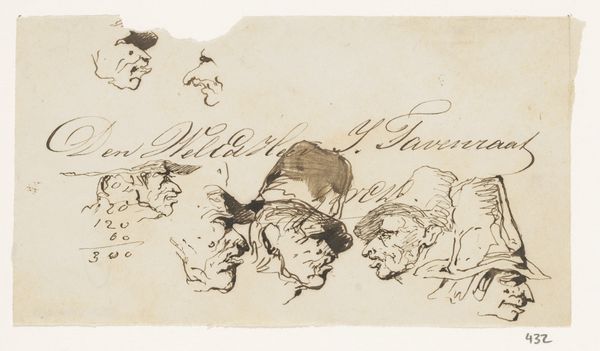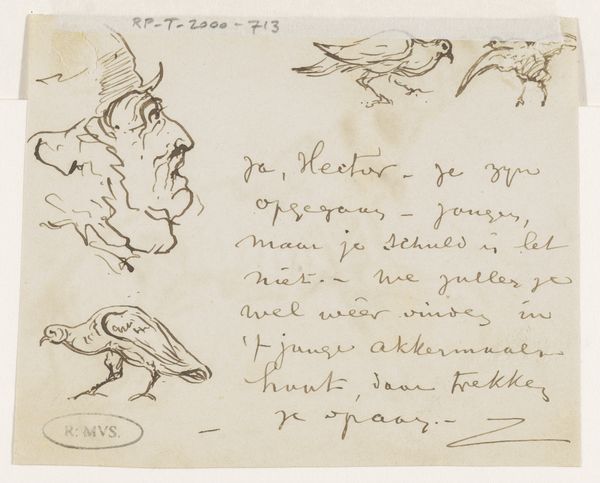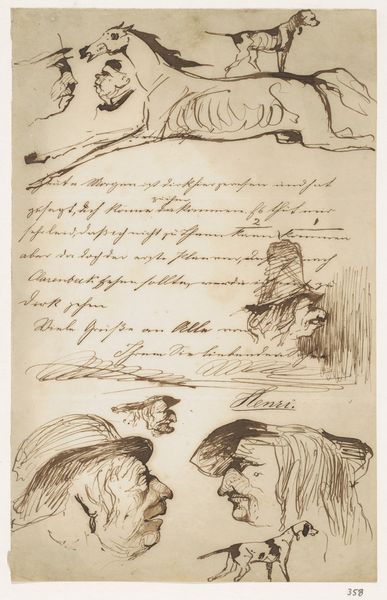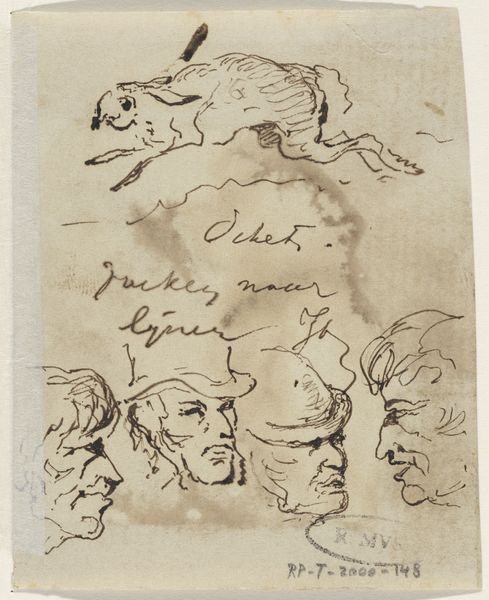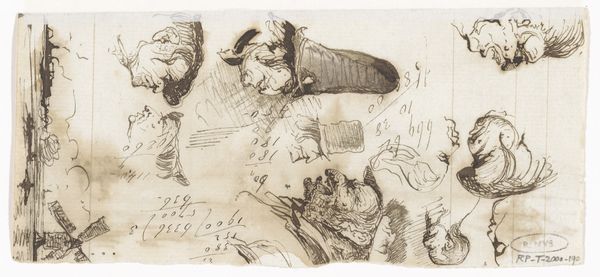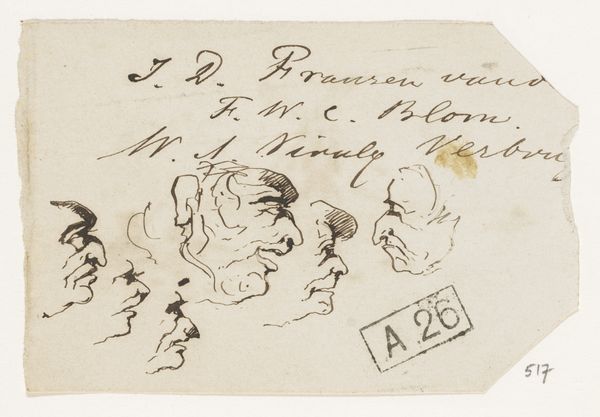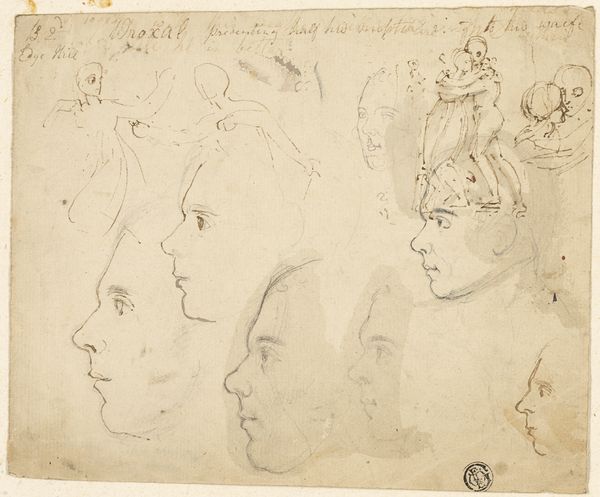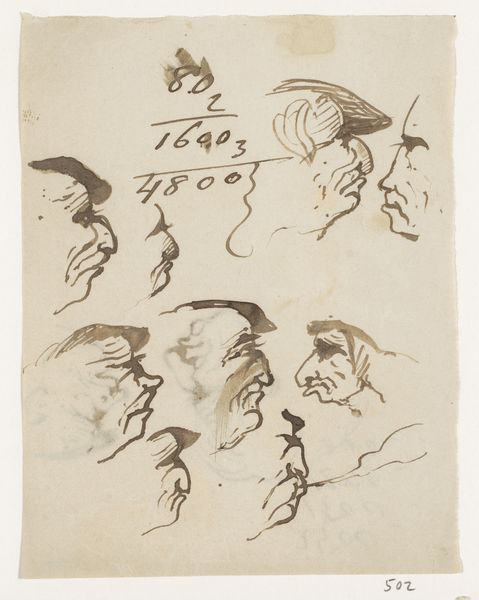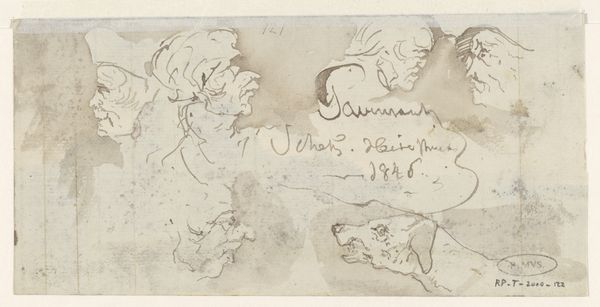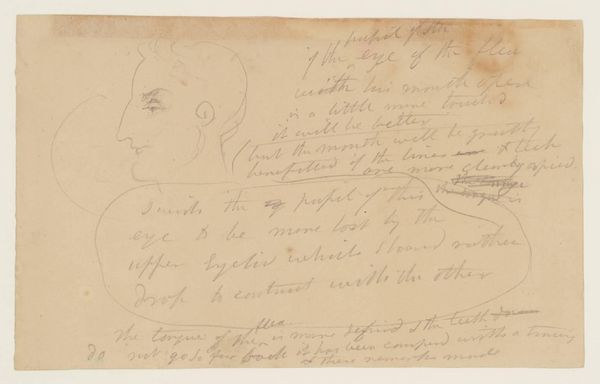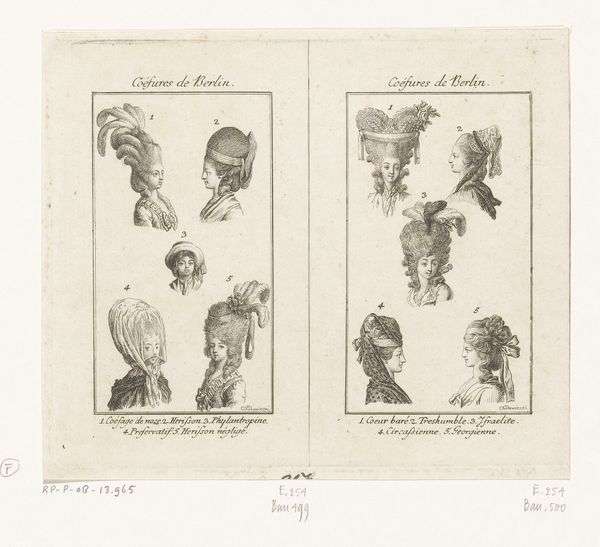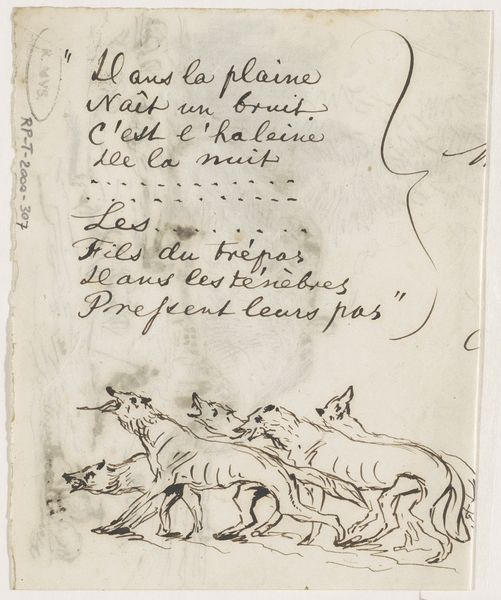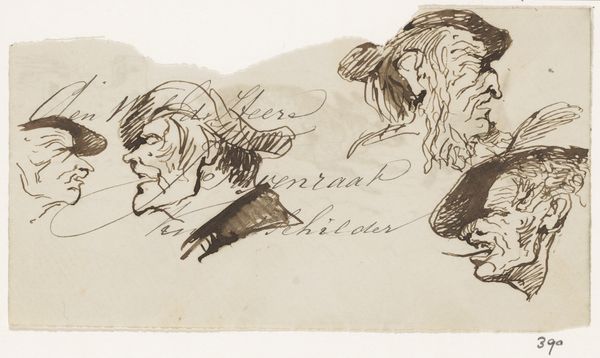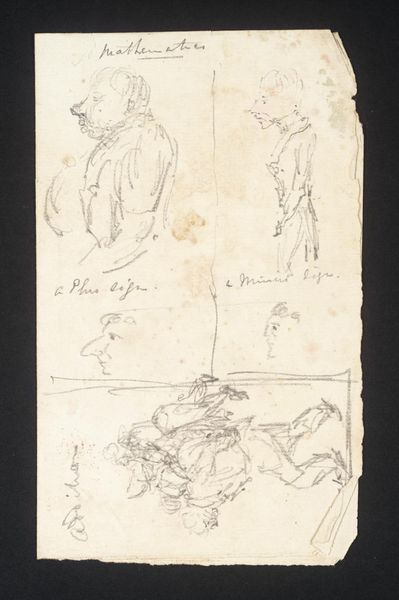
drawing, paper, ink, pen
#
portrait
#
drawing
#
imaginative character sketch
#
quirky sketch
#
dutch-golden-age
#
pencil sketch
#
figuration
#
paper
#
personal sketchbook
#
ink
#
sketchwork
#
ink drawing experimentation
#
sketchbook drawing
#
pen
#
watercolour illustration
#
genre-painting
#
storyboard and sketchbook work
#
sketchbook art
Dimensions: height 140 mm, width 142 mm
Copyright: Rijks Museum: Open Domain
Editor: This is "Koppen en hazen," Heads and Hares, an 1868 pen and ink drawing by Johannes Tavenraat in the Rijksmuseum. It looks like a study page from a sketchbook – loose figures and text scattered across the paper. It feels very informal. What do you see in this piece, especially beyond its initial sketchbook impression? Curator: Immediately, I am struck by the duality inherent in its symbolism. Hares, often associated with vulnerability and quickness, share the space with heads, presumably portraits, suggesting introspection and perhaps a degree of authority. But look at the context. Do you notice how these sketches mingle with the printed text – snippets of public notices and pronouncements? Editor: Yes, I see that! It almost looks like he’s repurposing some old document, or a flyer of some kind. Curator: Precisely! Now, consider this: is Tavenraat merely doodling, or is he subtly commenting on the relationship between the private world of thought – represented by the portraits – and the pervasive, often intrusive, voice of public life? Could these pairings be exploring ideas about identity? Are we our own ‘heads’, or are we defined by the ‘hares’ of society, scurrying this way and that? Editor: I hadn’t considered it that deeply. The contrast is quite compelling. So, even something that seems like a simple sketch page can be laden with symbolic weight? Curator: Absolutely. It invites us to consider the emotional, psychological, and even political context of 19th-century life through these seemingly disparate images. Visual symbols can sometimes reveal more than the obvious! Editor: That's really fascinating. It's amazing to see how much meaning can be layered into a drawing that at first just looks like a fleeting idea. I will definitely think about this piece again.
Comments
No comments
Be the first to comment and join the conversation on the ultimate creative platform.
